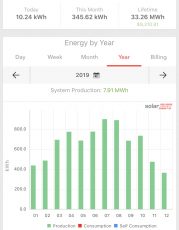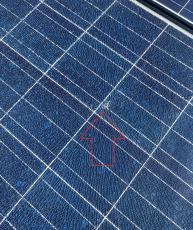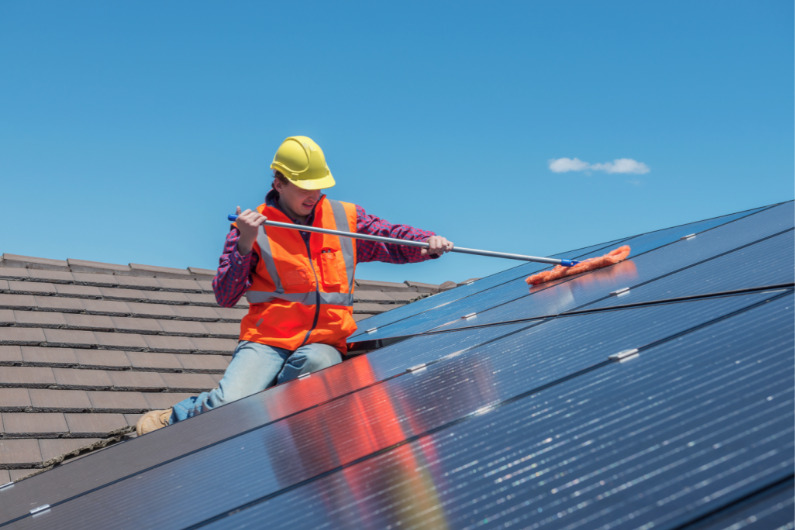A common question property owners ask is how much solar panel maintenance is involved after you install solar. This article will cover what goes into maintaining your solar panels in tip-top shape and producing as much electricity as possible throughout the year. You may be surprised to learn how little solar panel maintenance goes into owning solar.
Before we start, we’ll share with you how you maintain the solar panels, and the rest of the system may depend on how you acquired it. If it is a lease, your level of responsibility may not only be very low. You may not have permission to do much else beyond simply cleaning the solar panels.
If you own the system, you have a lot more flexibility for options. The catch is to keep the installer’s warranty. You have to ensure they do the work for anything more than cleaning.
Solar Panel Maintenance: Monitoring

Solar Panel Maintenance: Monitoring
We’ll start with monitoring because it’s the most common issue with solar panel systems. Worry not, it’s not any actual work, and you can easily do this. Remember, this only applies if your solar panel system has a functional monitoring system installed.
Sometimes when a homeowner resets their internet router, buys a new one, or does something that may interrupt the internet feed to the monitoring system, it causes the monitoring to think that the solar panel system is not functioning or is turned off.
Resetting the monitoring by unplugging and plugging the power supply into the monitoring usually fixes the issue. If that doesn’t work, try resetting your internet modem and the monitoring system simultaneously. And if that still doesn’t do the trick, you can follow troubleshooting instructions for your monitoring software.
Monitoring is often the root cause of an issue, but solar panel maintenance sometimes goes beyond app-based monitoring. Read on for more tips.
Solar Panel Maintenance: Cleaning Solar Panels
To be frank, we do not necessarily believe in cleaning solar panels. Well, not in the traditional sense of the word. We do not think it is worth the time, money, or risk involved with cleaning solar panels like how you would wash your car. Sure, there may be a level of dust that accumulates on the solar panels over the year, but often a good rain will help wash most of that away. Suppose you have a tree nearby that sheds a lot of pollen or leaf matter that may accumulate on the panels. In that case, blowing off or rinsing the panels more regularly with a stream of water may make more sense.
I have had solar on my roof since 2015, and since then, I have experimented with cleaning my panels during different times of the year. I found that the biggest gain in production came when I cleaned the solar panels during the summer since there were more sun hours for electricity generation. The opposite is true during the winter when sunlight hours are at their lowest. So it makes less sense to clean the panels in the winter months.
Overall, the increased production, even during the summer, was so negligible that I stopped cleaning my panels after two years of ownership. It just wasn’t worth the hassle and risk of climbing my roof. I’d even go further in saying that it wouldn’t be worth the money to hire a cleaning crew for the panels. Again I would defer to simply hosing them off from the ground or waiting for a nice rain to rinse them off.
If you feel compelled to get on your roof to clean the panels, be sure to do so as safely as possible.
Solar Panel Maintenance: Inspecting Panels

Solar Panel Maintenance: Inspecting Panels
Inspection is a better way to categorize solar panel maintenance. By this, we mean that it’s far easier to climb the roof to look at the condition of the panels, the conduit, the fittings, junction boxes, and the solar panel itself. Doing this is best, especially if you consider putting your house up for sale. A complete report of the panel system’s health readily available for the next homeowners is worth the money. If everything is fine with the system, you can make a case for the value of your home with solar panels.
Still, all of the components installed alongside the solar panels are every bit critical to the functionality of the system.
The lack of real moving parts means that “wear and tear” will be minimal, but make no mistake, wear and tear do take place. The weakest point of the overall system integrity is any part made of plastic PVC. Junction boxes made of plastic and left exposed on the roof will eventually break and allow water in. You want to see that your installer placed junction boxes underneath the solar panels to protect them from the sun. This is especially true if your installer ran plastic conduit on the roof. This is a corner that too many cheap and low-quality installers cut to show a lower price – which will only come back and haunt the homeowner.
As far as solar panels go, inspecting solar panels will give you an understanding of their physical condition. While it is not very common that solar panels themselves have any damage, it is not unheard of. Large hail can, in fact, break a solar panel, as can the neighborhood kid with a ball or a rock. The good news is that even when solar panels are shattered, they still function.
An inverter like Enphase or SolarEdge will allow for panel-level functionality, so you may not even notice there is a drop in output. In contrast, a string inverter like an SMA Sunnyboy may cause the string to see a greater dip in output. The images to the left show a shattered solar panel and the barely-noticeable decrease in output on the monitoring portal. That broken panel is on my roof, and given the minimal output decrease, the replacement cost does not justify the action.
Solar Panel Maintenance: Replacing Panels
Suppose you have a complete panel failure that comes to your attention during solar panel maintenance. In that case, chances are good that you may be able to file a warranty claim with the manufacturer. Panel failures that stem from physical damage caused by hail, a rock, or some other impact, may not be covered by a warranty.
Suppose you are not climbing the roof or using a drone to inspect the solar panels. In that case, you may notice an issue by simply looking at the monitoring. Although even a broken panel will still produce a lot of electricity, it can be easy to miss physical damage because the output may not raise any red flags. Speaking for myself, it wasn’t until I actually flew the drone over the panels that I noticed something wrong.
Replacing a solar panel is not very common. Still, if you do have to replace a solar panel, it is encouraged that you do not take on this level of the maintenance yourself for a few reasons. First, getting on the roof with a large solar panel is dangerous if you are not experienced in climbing up and down roofs carrying solar panels. Second, if it is a lease, the responsibility would fall on the leasing company. Finally, if it was a purchase, the company that installed the system may void its warranty on the system if they do not do the work themselves.
Solar Panel Maintenance: Replacing Inverter
The inverter is the heart of the system and the component that will fail – this we can guarantee you. Suppose you have a single-point inverter like a Fronius, SMA, or SolarEdge. In that case, the lifespan is anticipated to be around ten years.
The inverter replacement can be defined as solar panel maintenance because the panels won’t function without it. Suppose you have a single-point inverter with monitoring installed. In that case, you will be notified if there is a critical issue via email if your installer sets up automated notifications or if you did that yourself. This can easily be done in the settings of the monitoring application found on your phone. If you do happen to get this notification or notice that the application shows zero output and you have verified that the monitoring or internet source is not the issue, then now would be a good time to call the solar installer or the leasing company.
Replacing an inverter is not a tall order, especially if it is easily accessed at ground level. Replacing a microinverter involves more work because you have to climb the roof, remove the solar panel, and then remove the inverter.
If your system comprises microinverters, you can anticipate their lifespan to be between 20-25 years. Microinverters last longer than single-point inverters and may require less maintenance because of their prolonged lifespan. Microinverter has a significantly lower workload than a single-point inverter. A single-point inverter handles the workload of the entire system. On the other hand, a microinverter handles the panel’s workload to which it is attached.
The drawback to a microinverter system is that if you have one inverter failing, chances are that other inverters will fail not too far into the future.
You may potentially have multiple service calls sent out to your home to replace each microinverter as they fail. This is why sometimes it makes more sense to use a single-point inverter with power optimizers as a SolarEdge system would offer.
Solar Panel Maintenance: Very Little To Actually Maintain
Solar-panel maintenance is a very low effort when all is said and done. You may be more preoccupied with what to do from the savings you’ll get for having solar installed rather than doing any sort of maintenance.
Having a very high-resolution survey completed after installing your solar panel system is one of the most significant benefits of using DroneQuote. What this means for you as time wears on is a clear baseline of the condition of the system time of installation. You’ll be able to compare the current status of your system when it was first installed.
If you’re looking to install solar or roofing, get started for free with multiple quotes from different installers and see why DroneQuote is the smart way to go solar or put on a new roof.
Watch here to learn more about inverters:

[…] Regular cleaning of solar panels helps remove dirt, dust, bird droppings, leaves, and other contaminants that can hinder their performance. […]
[…] Understand the maintenance requirements of the solar panels and inquire about any additional costs associated with regular […]